ESA weighs options for replacing Soyuz launches
Friday, 18 March 2022 01:37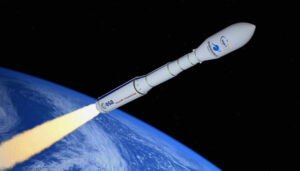
The European Space Agency is looking at options for launching missions that were to fly on Russia’s Soyuz rocket, including both non-European rockets and early use of the Ariane 6.
The post ESA weighs options for replacing Soyuz launches appeared first on SpaceNews.
NASA rolls out its mega Moon rocket -- here's what you need to know
Thursday, 17 March 2022 23:12 NASA's massive new rocket is poised to make its first journey to a launchpad on Thursday ahead of a battery of tests that will clear it to blast off to the Moon this summer.
It will leave the Kennedy Space Center's Vehicle Assembly Building at 5:00 pm Eastern Time (2100 GMT) and begin its glacially slow, 11-hour crawl on a transporter to the hallowed Launch Complex 39B, four miles (6.5 kilom
NASA's massive new rocket is poised to make its first journey to a launchpad on Thursday ahead of a battery of tests that will clear it to blast off to the Moon this summer.
It will leave the Kennedy Space Center's Vehicle Assembly Building at 5:00 pm Eastern Time (2100 GMT) and begin its glacially slow, 11-hour crawl on a transporter to the hallowed Launch Complex 39B, four miles (6.5 kilom Russian-European Mars mission suspended over Ukraine war
Thursday, 17 March 2022 23:12 A Russian-European mission to land a rover on Mars has been suspended due to the Kremlin's invasion of Ukraine, the European Space Agency announced Thursday, as Moscow said it regretted the "bitter" decision.
The ExoMars mission had been set to use a Russian launcher later this year to send a European rover to drill for signs of life on the Red Planet.
However, the ESA said the war in Uk
A Russian-European mission to land a rover on Mars has been suspended due to the Kremlin's invasion of Ukraine, the European Space Agency announced Thursday, as Moscow said it regretted the "bitter" decision.
The ExoMars mission had been set to use a Russian launcher later this year to send a European rover to drill for signs of life on the Red Planet.
However, the ESA said the war in Uk Orbit Fab gets $12 million to integrate refueling port with military satellites
Thursday, 17 March 2022 21:12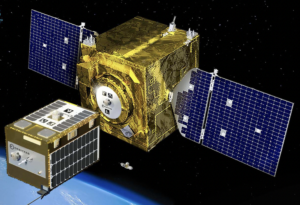
Orbit Fab, a venture-funded startup offering a refueling service in space, announced it has won a $12 million deal to ensure its fueling interface works with U.S. military satellites.
The post Orbit Fab gets $12 million to integrate refueling port with military satellites appeared first on SpaceNews.
Lunar swirl patterns and topography are related, study finds
Thursday, 17 March 2022 20:21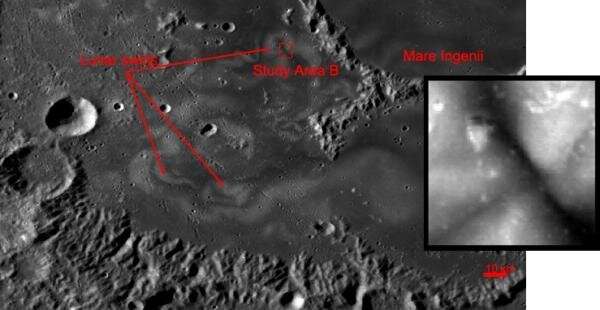
Bright and dark swirling patterns on the Moon's surface have been linked to the topography of the swirls, says a new paper by a team of scientists from the Planetary Science Institute.
"This is the first time there has been a demonstrated correlation between the swirl albedo patterns and topography," said PSI Senior Scientist Deborah Domingue, lead author of "Topographic Correlations within Lunar Swirls in Mare Ingenii" that appears in Geophysical Research Letters.
International talks on space norms to continue but U.S. will not engage directly with Russia
Thursday, 17 March 2022 18:50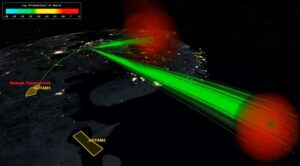
Bilateral U.S.-Russia space talks that had begun before the invasion of Ukraine are off the table for now, a U.S. State Department official said March 17.
The post International talks on space norms to continue but U.S.
NASA rolls out its mega Moon rocket—here's what you need to know
Thursday, 17 March 2022 16:53
NASA's massive new rocket is poised to make its first journey to a launchpad on Thursday ahead of a battery of tests that will clear it to blast off to the Moon this summer.
It will leave the Kennedy Space Center's Vehicle Assembly Building at 5:00 pm Eastern Time (2100 GMT) and begin its glacially slow, 11-hour crawl on a transporter to the hallowed Launch Complex 39B, four miles (6.5 kilometers) away.
ESA Council meeting - media information session
Thursday, 17 March 2022 16:00 Video:
01:01:27
Video:
01:01:27
Replay of the media information session following the 306th ESA Council, held on 16 and 17 March 2022 in Paris, France. Updates were provided on ESA’s main programmes, the outcome of the 16 February Space Summit in Toulouse, upcoming missions for Earth Observation, and for ESA astronauts, the overall rollout of the Director General’s Agenda 2025 on the way to the ESA Ministerial Meeting in November 2022 as well as the implications of the current geopolitical situation on ESA’s activities.
ESA suspends work with Russia on ExoMars mission
Thursday, 17 March 2022 13:45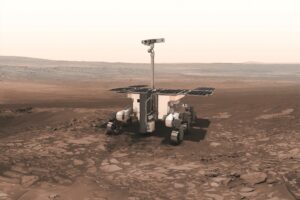
ESA has formally halted plans to launch its ExoMars mission on a Russian rocket in September in response to Russia’s invasion of Ukraine.
The post ESA suspends work with Russia on ExoMars mission appeared first on SpaceNews.
Op-ed | Order and Progress – Brazil’s Second Act in Space
Thursday, 17 March 2022 12:29
As the pieces of Brazil’s modern space ecosystem slide into place, the country isn’t just now waking up to the value and potential in the space ecosystem. It is entering its “second act.
Sierra Space to work with Mitsubishi Heavy Industries on commercial space station technologies
Thursday, 17 March 2022 12:00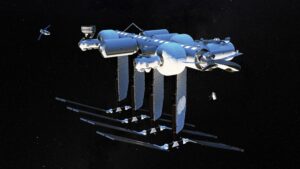
Sierra Space and Mitsubishi Heavy Industries (MHI) have signed an agreement to study collaboration on technologies to support a planned commercial space station.
The post Sierra Space to work with Mitsubishi Heavy Industries on commercial space station technologies appeared first on SpaceNews.
ExoMars suspended
Thursday, 17 March 2022 09:57Press Release N° 9–2022
As an intergovernmental organisation mandated to develop and implement space programmes in full respect with European values, we deeply deplore the human casualties and tragic consequences of the aggression towards Ukraine. While recognising the impact on scientific exploration of space, ESA is fully aligned with the sanctions imposed on Russia by its Member States.
Spire Global signs deal with NorthStar Earth and Space for a dedicated constellation
Thursday, 17 March 2022 09:04 Spire Global, Inc. (NYSE: SPIR) has announced a new space-as-a-service agreement with NorthStar Earth and Space ("NorthStar"), a comprehensive Earth and Space Information Services Platform, to build a constellation of satellites focused on space-situational awareness (SSA) and debris monitoring. The first award within the contract is for three satellites, with pre-agreed options for NorthStar to
Spire Global, Inc. (NYSE: SPIR) has announced a new space-as-a-service agreement with NorthStar Earth and Space ("NorthStar"), a comprehensive Earth and Space Information Services Platform, to build a constellation of satellites focused on space-situational awareness (SSA) and debris monitoring. The first award within the contract is for three satellites, with pre-agreed options for NorthStar to Beyond Gravity boosts its capacity for satellite dispenser systems in Linkoping and creates 60 new jobs with new production facility
Thursday, 17 March 2022 09:04 Beyond Gravity (formerly RUAG Space) is significantly ramping up its production of satellite dispensers in Linkoping, Sweden, with the construction of a new facility. It will be used to produce dispensers for satellite constellations. With the new building, Beyond Gravity is doubling its production capacity for satellite dispenser systems and creating 60 new jobs in Linkoping. The groundbreaking
Beyond Gravity (formerly RUAG Space) is significantly ramping up its production of satellite dispensers in Linkoping, Sweden, with the construction of a new facility. It will be used to produce dispensers for satellite constellations. With the new building, Beyond Gravity is doubling its production capacity for satellite dispenser systems and creating 60 new jobs in Linkoping. The groundbreaking Celestia Aerospace closes 100M euro seed round with London-Based Invema Ltd
Thursday, 17 March 2022 09:04 Invema Group LTD, with headquarters in London and international offices in Arizona (USA), Miami (USA), Toronto (Canada), Bogota (Colombia), Casablanca (Morocco), Tunis (Tunisia), Riyadh (Saudi Arabia) and Dubai (United Arab Emirates), invests 100 million euros in the orbital solutions company Celestia Aerospace located in Barcelona.
With this investment round, Celestia Aerospace launches a
Invema Group LTD, with headquarters in London and international offices in Arizona (USA), Miami (USA), Toronto (Canada), Bogota (Colombia), Casablanca (Morocco), Tunis (Tunisia), Riyadh (Saudi Arabia) and Dubai (United Arab Emirates), invests 100 million euros in the orbital solutions company Celestia Aerospace located in Barcelona.
With this investment round, Celestia Aerospace launches a 